TASTING FRANCE
Wine is so much more than flavored booze from grapes. The most interesting of them carry history, culture, climate and earth in the glass. Those of us who are lucky enough to be able to visit wine-growing regions in Europe quickly discover that even the most modest restaurant house wines somehow check all the boxes of enjoyment when consumed as they were intended, at mealtime.
Each region in Italy, Spain and France has its own culinary traditions based on its local cooking fat (butter, olive oil, lard), and the corresponding wine must taste good when combined with local foods and herbs. They’ve had 2500 years to practice, and wherever you go, local wines seem to perform as well as expensive aspirational ones, often better.
This past May my wife Dale and I took three weeks to explore parts of France I hadn’t visited, and some familiar places too, in order to get a better understanding of how their wines taste their best. We visited a few wineries, but gleaned just as many insights in restaurants, drawing harmony and complimentary contrasts with local specialties and their wines. I learned a lot.
Upon my return, a couple of customers who were following my Facebook posts suggested I host a tasting at The Wine Country, showing slides and sampling wines as I retraced my steps through five culinary and wine destinations. I mulled it around for awhile, wondering if anyone would want to join me in such a tasting.
CÔTE RÔTIE
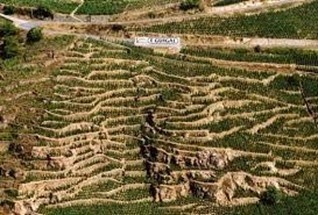
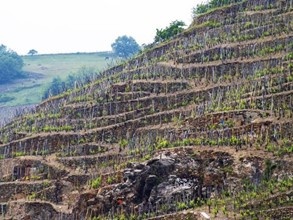
Dale and I didn’t actually stop our car in Cote Rotie, but I at least wanted to show her the impressive landscape, so we drove past the Côte Blonde and the Côte Brune and marveled at the steep slopes and staked vines sprouting their spring leaves. The wines here are Syrah, sometimes with Viognier added for aroma and complexity. It was the place that solidified my concept of Syrah when I first visited in 1992, having been completely beguiled by its perfume and silky texture. We drank a bottle of Cote Rotie during our first dinner in France the night we arrived.
SAVOIE
Think of the wines of Savoie as alpine wines, grown in this Swiss-border state, and if you’ve ever sipped water out of a cold mountain spring, you get a sense of what to expect from the minerally-crisp white wines and even the minerally reds. Places like Apremont and Les Abymes are within sight of the Alps, still sporting snow-capped mountains in May. Grape varieties we never see grown in California—Jacquère, Altesse, Mondeuse—which admittedly will never achieve the heights of Chardonnay, Pinot Noir or Cabernet Sauvignon, still can be compelling at the right time, in the right place, with the right food and the right company. These wines come alive, and I've loved drinking them at home for a long time.
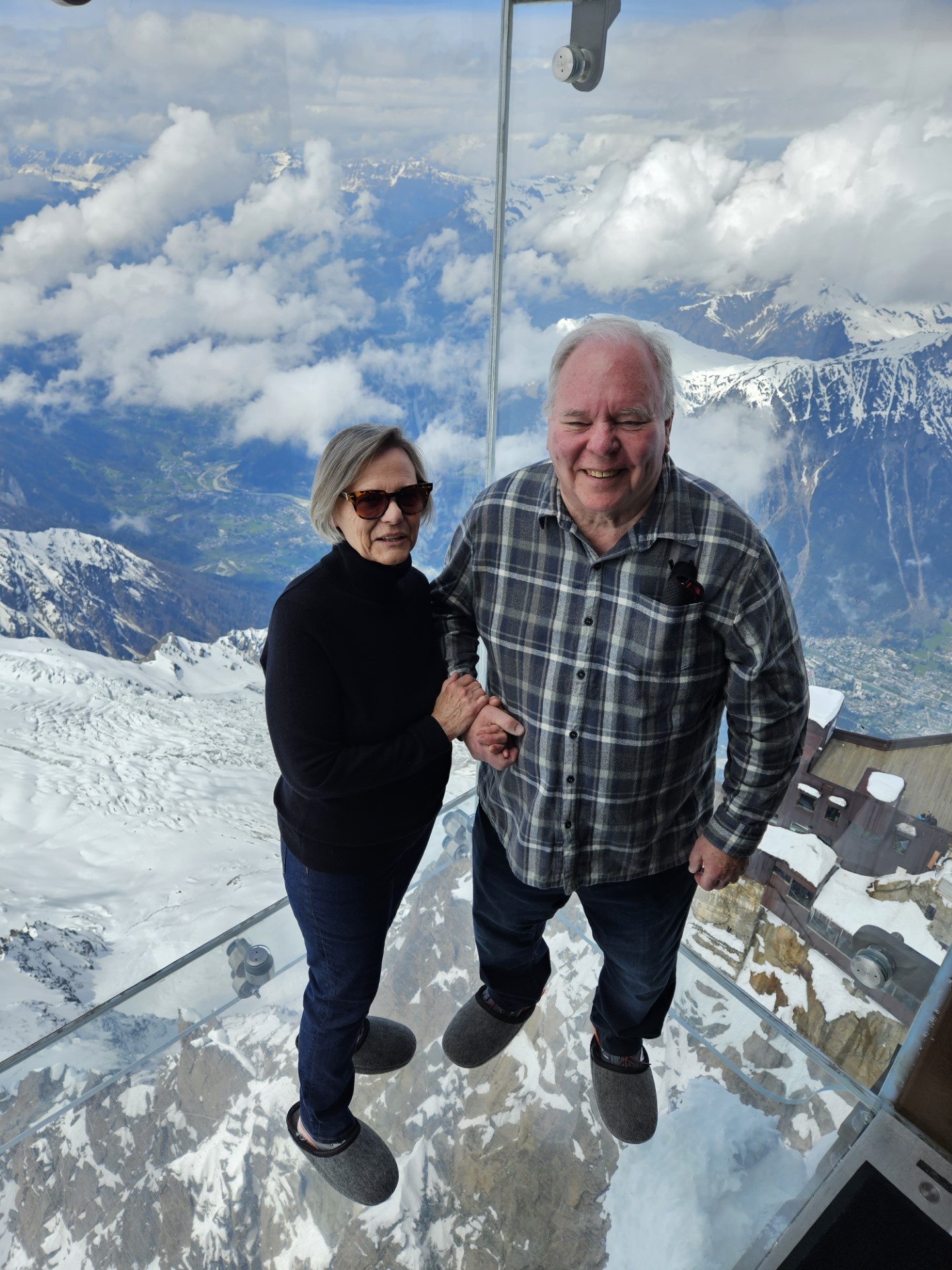
We wanted to be tourists for the first part of our trip, while still eating and drinking the local foods and wines. We visited the ski resort of Chamonix, site of the first winter Olympics, taking a cable car up the mountain, walking inside a glacier, trekking to an animal sanctuary, then we visited beautiful Lake Annecy, had a multi-course lake-view lunch with wine pairings at a fancy-pants Michelin restaurant, and met vintners Blard and Marc Portaz, greatly admiring and enjoying the winemakers and their wines.
JURA
A couple of decades ago I was on an importer tour concluding dinner at Didier Dagueneau’s home, when he brought out a bottle of the Jura specialty, Vin Jaune, an unusual white wine that was intentionally oxidized like sherry, with a little fruit in it, and none of the bright delineation of true Jerez.
“What do you think?” asked someone at the table.
“It tastes like bad sherry,” was my response.
Importer Michael Sullivan, who was sitting next to me, replied, “You have to go there and experience this wine with the local foods and cheeses at its source, and you'll get this wine.”
It took me 19 years, but I finally made it this past May, sampling these original, sometimes idiosyncratic wines with the rich dishes of the Jura, many laden with morels and cream sauces deglazed with their wines. Sullivan was right. Sometimes wines are best enjoyed where they are born.
And an invaluable insight was provided by vintner Annie Credoz in Chateau-Chalon who made the sherry/Vin Jaune distinction. Unlike Jerez, where we customarily drink dry sherries as aperitifs, serving Vin Jaune in the same way is a no-no.
Annie shook her head. "Never! You drink Vin Jaune at the end of the meal, with Comte cheese!" she intoned. If I hadn't travelled there, I never would have learned that lesson. Confusing aperitif, perhaps, but a very, very interesting wine to cap a rich, satisfying, cream and mushroom-laden chicken dinner.
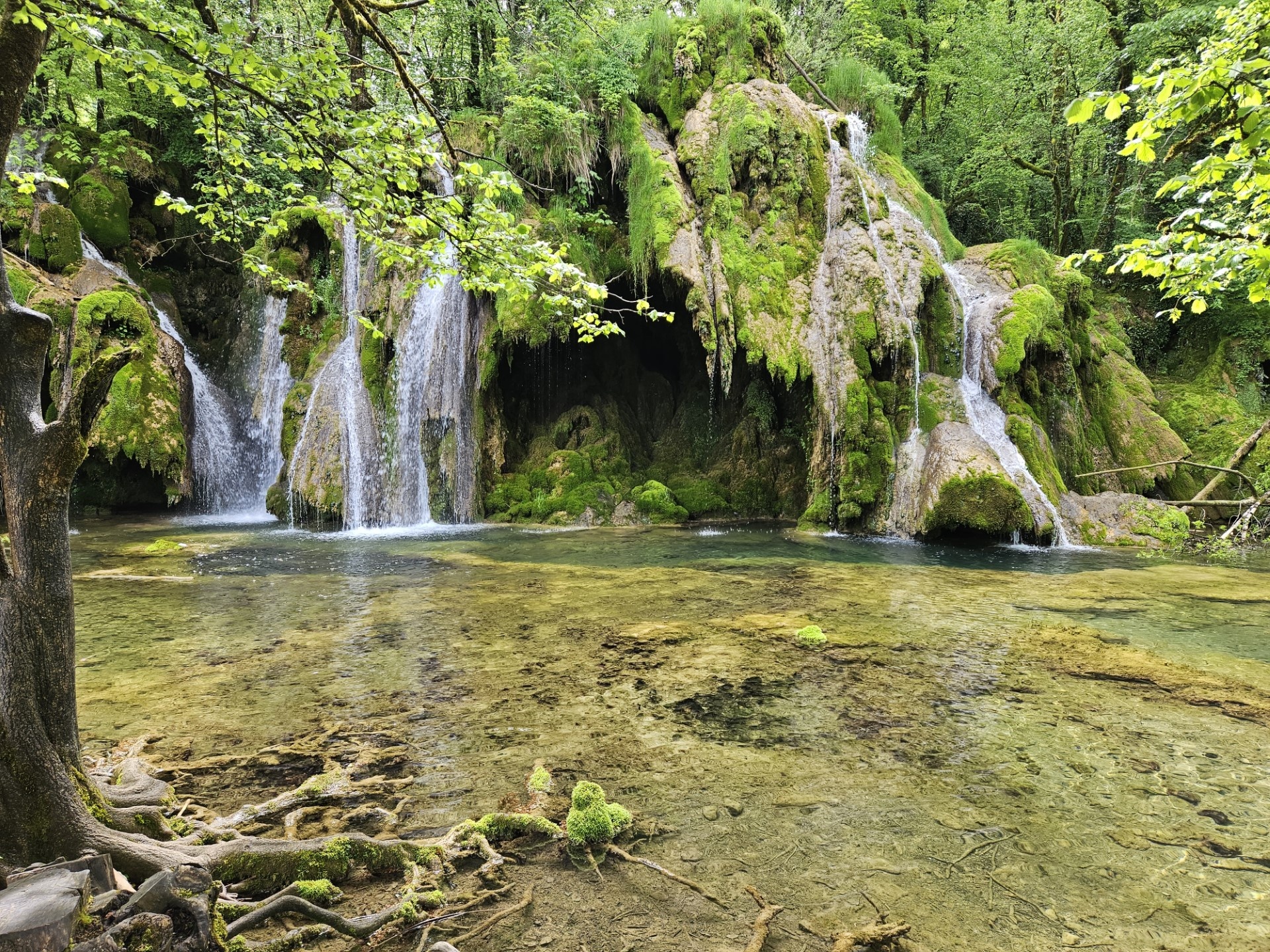
The Jura region lies east of Burgundy, not far from Germany and Switzerland, and the sometimes rocky, often lush and pastoral scenery is quite striking, with breathtaking waterfalls and lush landscapes. The wines are made from Savagnin, Chardonnay, Poulsard, and Trousseau, and the best of their whites can resemble well-aged Meursaults.
BEAUJOLAIS
Beaujolais was one of the very first wines I drank (just before my 21st birthday, thanks to my older date!), and it tasted great with my prime rib at a long defunct Long Beach dinner house. Made from Gamay Noir (with a little rosé and Chardonnay grown there, too), Beaujolais is the workhorse of France’s wine world, about as versatile at the table as wine gets. When well made, the wines have an affable easy-going nature that is friendly and inviting, and Beaujolais made from the ten “crus”—hillside areas with better sun exposure and drainage and a variety of soils—can be bolder, richer, more complex and even ageworthy, the best without losing their special charm.
My visit to Beaujolais, although only a day long, was the first time I was able to drive the region and understand the lay of the land, winding up Mont Brouilly and down to Fleurie, Moulin-a-Vent, Morgon, Saint-Amour and then smack-dab into Burgundy's Pouilly-Fuisse. I also discovered some new wines I’m eager to share with customers and friends.
In fact, I was so impressed drinking these wines in their homeland, they were all I ordered once we got to Lyon. I still crave them.
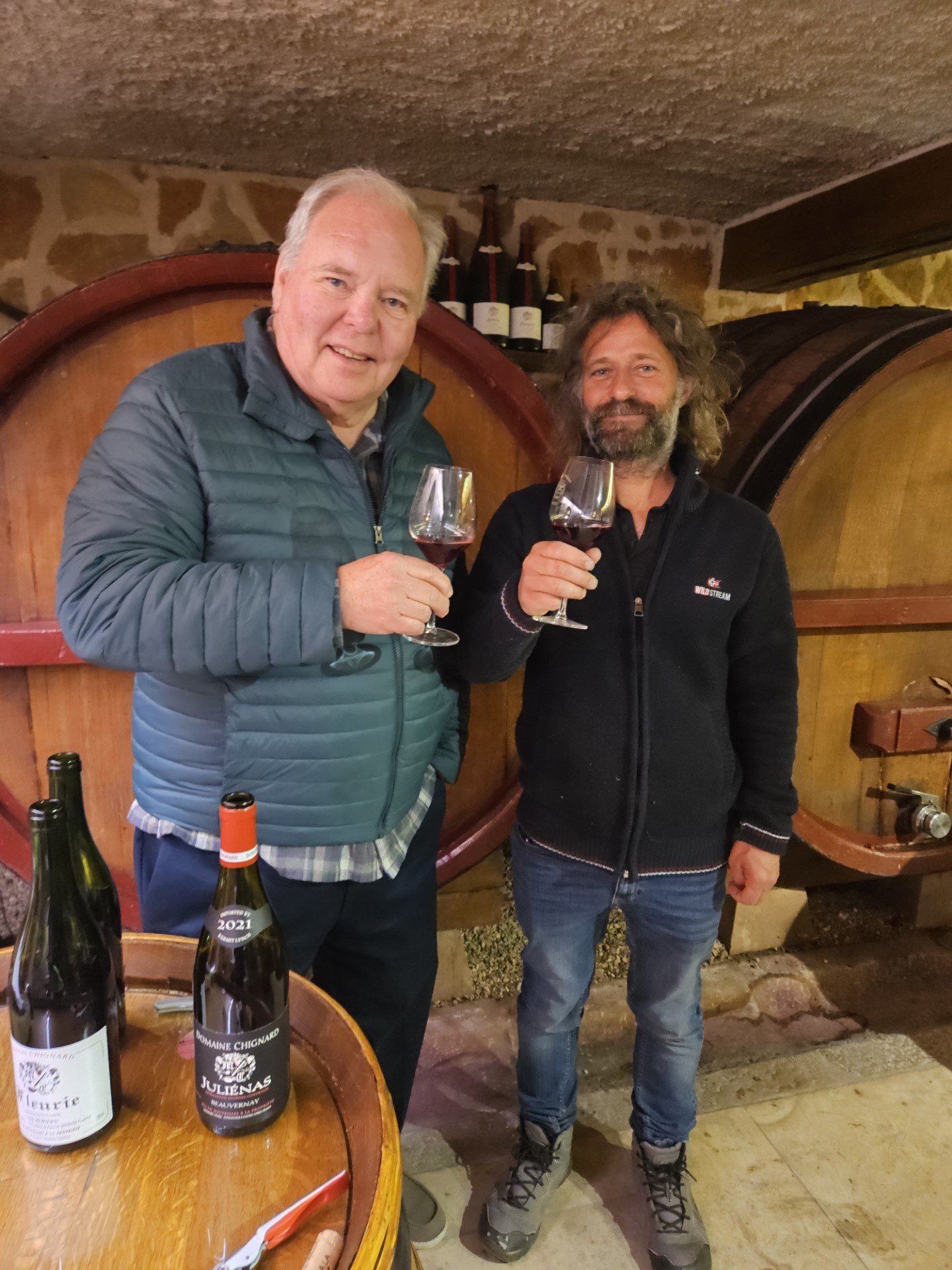
We were wonderfully hosted by Chateau Thivin in Côte de Brouilly and Domaine Chignard in Fleurie.
BURGUNDY
Burgundy is the Holy Land for wine connoisseurs and winemakers around the world. The mighty chateaux of Bordeaux evoke power and wealth, but Burgundy is downright spiritual.
Dale and I visited three estates in Burgundy we've had long associations with: Camus-Bruchon in Savigny-les-Beaune, De Montille in their Meursault winery, and Marchand Tawse in Nuits Saint-Georges. I had been to Camus-Bruchon on the same trip as the Dagueneau dinner, where winemaker Lucien Camus hosted us. He died some years ago and his talented and gracious son Guillaume took over, hosting Dale and me this visit. The wines have had a permanent home at our store for a quarter-century, offering a true and traditional vision, while being cost-friendly to consumers. Want an elegant and intriguing wine for your roast chicken or prime rib? Look no further.
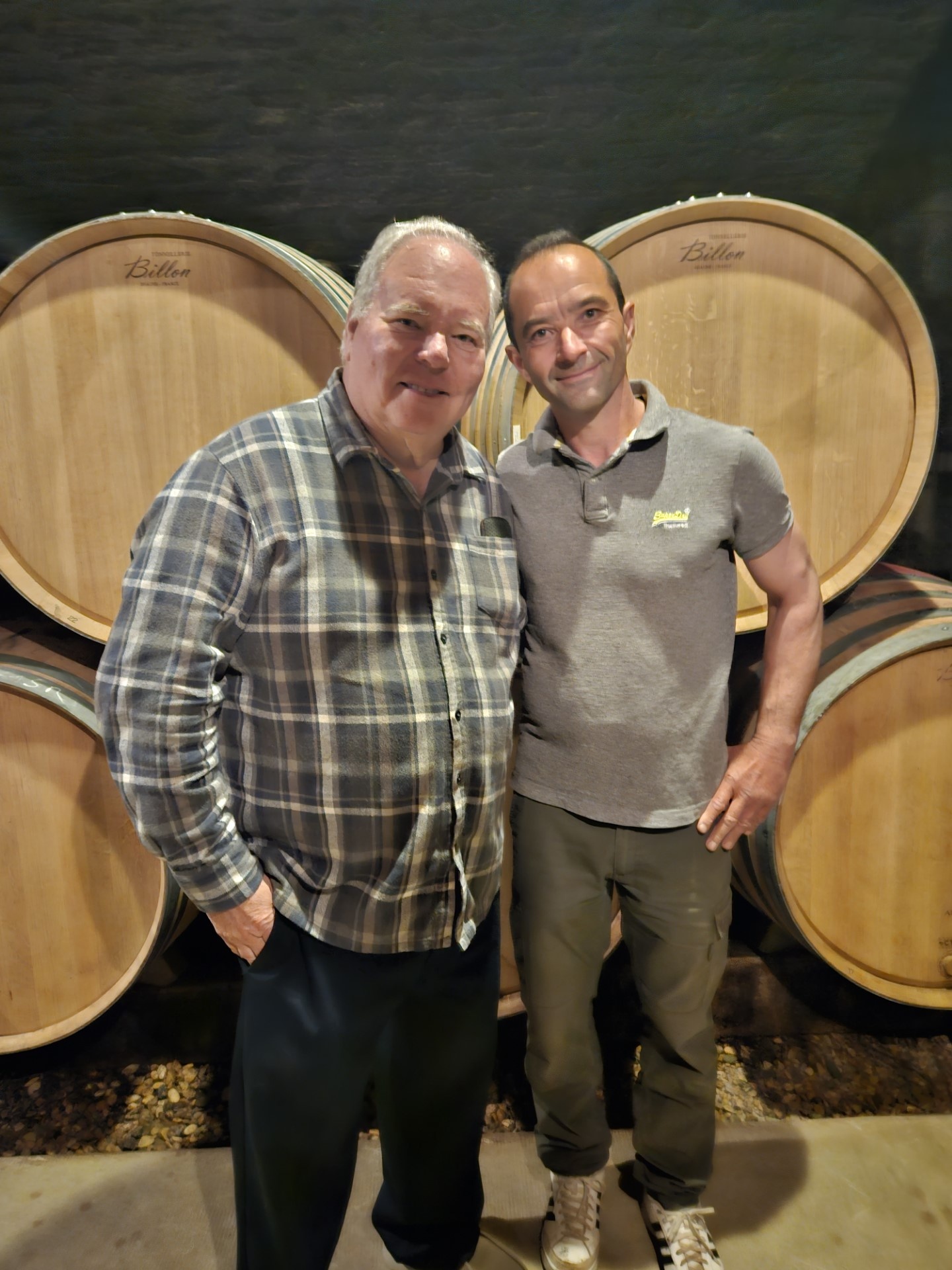
Mark Fincham, co-winemaker for Marchand Tawse, is in charge of the domaine-owned wines and graciously hosted us for a walk-through of the facilities and a tasting of rather majestic wines. These are not wines that impress for their power, but for their finesse, beauty and sophistication. Sure-handed, confident winemaking.
Etienne de Montille was out of the country when Dale and I dropped into their latest winery acquisition, which was actually an older winery purchased from Bouchard. After barrel tasting some righteously good red and white Burgundies at the highest levels from the Cote de Nuits and Cote de Beaune, our tour guide brought out a mystery bottle in a brown bag. It was a white wine, but which one? Chassagne-Montrachet? Puligny-Montrachet? Meursault? I was shocked and delighted after the big reveal, and pleased that this wonderful white was on our store shelves. Ask me and I'll reveal the answer.
POSTSCRIPT: On a Friday night in October, I, indeed, hosted a "wine tour" retracing our steps from our May French vacation from Lyon to Cote Rotie to Chamonix to Lake Annecy to Arbois in the Jura to Burgundy to Beaujolais and back to Lyon. We had a full house!
Oh, and the mystery bagged wine at De Montille turned out to be an impressive Chardonnay from the Sta Rita Hills, a project of Etienne De Montille called Racines. Quelle surprise!












